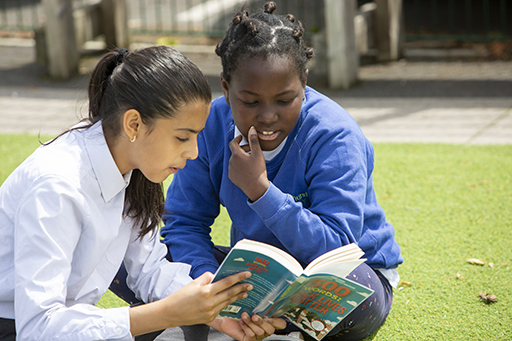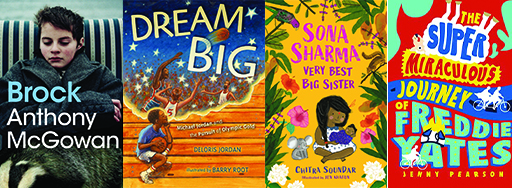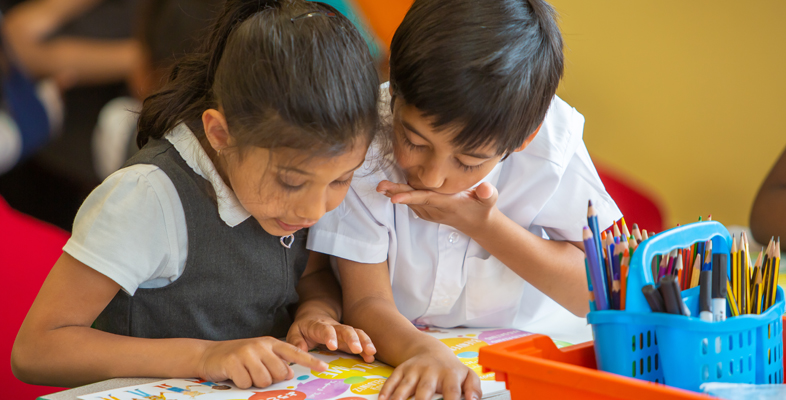6 Personal resonance in narrative and other texts
Acknowledging the reader’s active role in making meaning from text sheds light on personal preference and the importance of choice and variety in Reading for Pleasure.

People are naturally drawn to narrative texts with which they find connection and in which the events, characters and issues personally resonate with them. In these texts, the issues or circumstances presented may evoke emotionally charged memories or may carry some personal meaning and connection to the reader’s own life. Personal resonance in a literary text stimulates deeper level involvement, and research suggests that it also enhances text processing as the reader attends to the text with greater care and concentration (Kuzmičová and Bálint, 2019).

Prior knowledge of the subject matter or situations presented in a text enhances one’s mental imagery, enabling you to visualise scenes more intensely (Therman, 2008). It’s therefore not surprising that illustrations (throughout the text or on the cover) are particularly powerful in activating connections and prior knowledge. Perhaps you are drawn to novels that are set in a geographical location of personal significance, for example. Many children seek out books that involve their favorite hobby, interests or a place they know. Recent research also shows that different genres take children’s memories to different places, with books that focus on children’s real worlds and relationships being best suited to prompt thinking about the complex fabric of children’s social and emotional experiences (Kuzmičová and Cremin, 2021).
Personal resonance may be found in a narrative text when the reader perceives similarities between themselves and the protagonists, whether it be more objective characteristics (gender, ethnicity, religion, age, family situation) or subjective features, such as life experiences. Equally, it may be that the reader recognises features in characters that they desire or aspire to, such as bravery, achievements or popularity. Such texts enable children to see that people like them can be the heroine or hero, and these texts can help children to come to terms with adverse life situations.
Poetry and non-fiction also offer space for filling the ‘gaps in texts’. This is what Iser (1978) refers to as the spaces and unwritten portions of any text that call for the reader’s participation. Readers fill in the various gaps in different ways, depending on their life experiences and the wider connections they bring to the text. Reading the newspaper is an obvious example, as is finding that connection to emotions, observations and understandings in poetry.

When children find texts that personally resonate, they become more invested in their reading, generate sharper mental images and experience the meaning more deeply. This is important because deeper engagement encourages children to read critically. Rather than taking the words on the page as an accurate and correct account, the deeply engaged reader critiques and asks questions of the text, comparing and contrasting the ideas presented with their prior knowledge. Additionally, in this space of deep engagement the reader engages more creatively and can begin to imagine themselves as a character in the story, or hypothesise about the parallels to their own context, the possibilities, and the ways in which it has been constructed to convey particular meanings.
Activity _unit3.6.1 Activity 2 Observing personal resonance in text in classroom practice
Read this brief account of one reluctant reader and make a note of the personal resonances which surfaced, the subtle shifts in his sense of self as a reader and the moves his teacher made to nurture his engagement.
Case study _unit3.6.1
Ishmael, a six-year-old, was described by his teacher, Miss P, as a boy who rarely if ever chose to read to himself or with others. He preferred mathematics. But on close observation during a ‘book blanket’ exploration (when the class were invited to explore a range of texts blanketed on the table), Miss P observed him looking at an atlas and encouraged him to take this home. Two days later Ishmael brought the atlas back and told Miss P he hadn’t read it – he didn’t know how. But during their conversation he shared that he had in fact found Birmingham (where he lived), Turkey (where the family hoped to go on holiday) and Pakistan (where his dad frequently visited). Miss P explained that this was reading – he’d made sense of the atlas for his own purposes and found things that were connected to him. His reading related to his goals for that book. Ishmael smiled – he appeared pleased, delighted even. Perhaps he was seeing himself as a reader for the first time.
After this encounter, Miss P noticed that Ishmael began to engage more fully in reading activities. For example, she saw his gaze following her for the first time during reading aloud – as if he were listening more intently. She observed that in reading time Ishmael often chose to sit near Ariq, a good reader, and began sharing books and talking informally with him about what they were reading. When World Book Day came around, Ishmael told her excitedly that he was going to spend his voucher on the book Planet Omar: Operation Kind, which was related to the class read-aloud Planet Omar by Zanib Mian. Ishmael’s mother reported he had started to read at home – she was surprised and thrilled by this and wanted more book recommendations to support her son.
Comment
The atlas personally resonated with Ishmael, representing places of importance in his life and that were a part of his identity. Through observation and conversation, Miss P helped him recognise himself as a reader, and as a consequence he began to connect more to texts and became intrinsically and socially motivated to read and join Ariq and his classmates as they listened to their teacher reading aloud.
As the vignette about Ishmael demonstrates, reading is not only an affective, personal process, it is also a social one. Reading for Pleasure responds to the psychological human need to be competent, autonomous and related to others, and enhances self-motivation and mental health. Talk and informal reader-to-reader conversations play a key role in nurturing children’s interest in reading as they recommend books to each other and build reading networks and relationships. In the next section, you will bring together what you have learned so far in Sessions 1 and 2 and consider reader motivation in more detail.
